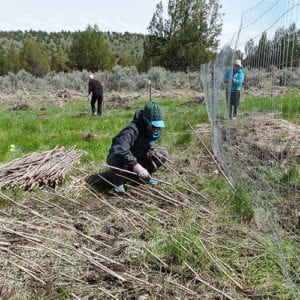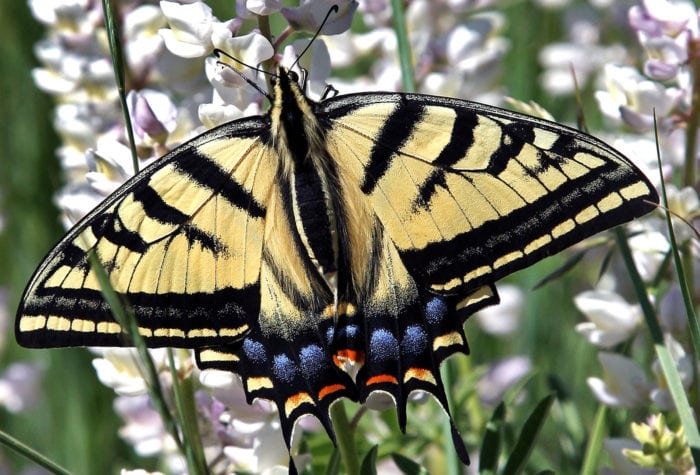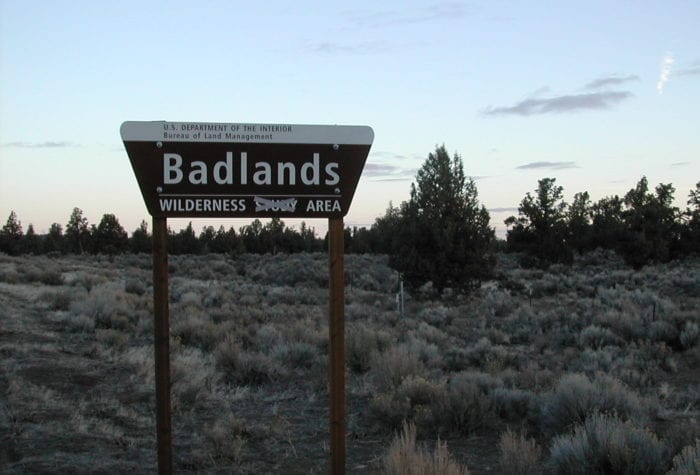Willow Creek Planting (Day Trip)
| Organizer: Jefferson Jacobs
Start Date: 4/23/2019 End Date: 4/23/2019 Region: Deschutes River Basin Difficulty Rating: 1 out of 5 |
Maximum Group Size: 25 participants
About the place
A very small proportion of land in eastern Oregon has surface water available for fish and wildlife. Of that small amount of surface water, a large percentage of eastern Oregon’s water resources are located on private lands. Since fish and wildlife don’t observe political boundaries, we must work to protect their habitat requirements throughout their life-cycle regardless of ownership. In the case of Willow Creek, the section that we will be helping replant provides a critical linkage for the seasonal movements of redband trout moving between their high altitude headwaters in the Ochoco National Forest, to their low elevation habitat in the Crooked River National Grasslands. Through a conservation easement program and funding from the Conservation Reserve Enhancement Program, the owners of Scabby Hollow Ranch have provided an opportunity to raise the quality of habitat along Willow Creek.
About the stewardship work
The main objective of this trip is to plant about 3,000 willows and cottonwoods. These species can be planted by burying a cutting, or “stick”, that was harvested by volunteers from a live tree in the winter and stored in a cooler until we are ready to plant it. The planting technique involves creating a pilot hole by banging in a metal pike with a mallet, removing the pike and inserting a stick into the hole. For those of you who are new to planting in this way, or restoration trips in general, this trip will provide a great low-impact introduction to the process. For those of you who have helped out with this sort of work before, this will be a nice straight-forward trip without cobble or complications for planting.
We will teach you everything you need to know to work safely and ensure a high chance of survival for the plants. There is ample opportunity to work at your own pace and on aspects that work best with your physical capabilities.
Trip highlights and challenges
This trip provides one of our least physically challenging work opportunities, so challenges are minimal. However, volunteers will still need to be able to get up and down from the ground often, and navigate stumbling hazards along the creek. Highlights include getting to contribute to a significant, positive change that will be visible at the end of the day, and as the plants mature, even visible via Google Earth.
Trip timeline
This is a day trip with no camping involved.
- Tuesday, April 23, 8 a.m..: Meet at Scabby Hollow Ranch. Orientation and training in planting techniques and ecological impact of the work. Planting work until 4 p.m.
Camp
This is a day trip with no camping involved.
Difficulty
This trip has the lowest physical challenge rating of any of our trips. The entire work site is within a few minutes walk from the parking area, and the ground that we are working in should be essentially free of cobble or other obstacles. However, volunteers will still need to be able to get up and down from the ground often, and navigate stumbling hazards along the creek. As always, there will be the opportunity for folks to work at their own pace, take breaks and find ways to contribute which match their capabilities.
Participant responsibilities
Participants are responsible for their own transportation to and from the trip (car-pooling as always will be an option). Sturdy, off-trail, waterproof, ankle-high hiking boots would be OK for this trip, but a pair of rubber boots might be better as the ground will likely be soft or wet, and the best planting may be where there is a bit of water covering the bank. Participants should be prepared for inclement weather with various clothing layers, food and water to spend the day away from camp to conduct the work. We recommend bringing your own work gloves to provide a comfortable fit: but it is not required.
Gear provided
ONDA will provide work gloves if you don’t have a pair, all the tools needed for planting, excellent guidance in the field, and a few nice treats to eat during breaks.
Registration
An ONDA registration application and medical form are required for this trip. Check the box next to each trip you would like to attend. You only need to fill this form out once per year.
Apply Now
What happens next?
You will receive a confirmation email within 10 working days of submitting your form. The confirmation email will provide information regarding which trips you are on the “participant list” for, and which trips are full, and therefore you have been placed on the “waitlist.”
Six weeks before the start of the trip, the trip leader will send out an RSVP to make sure everyone is still able to participate. Based on RSVPs, open spaces will be backfilled with people from the waitlist.
Three weeks before the trip start date, registered and confirmed participants will receive driving instructions, maps, car-pooling options, and additional information in an email sent by the trip leader
If you have any questions in the meantime, please don’t hesitate to contact the trip leader.
This trip will be led by ONDA's Riparian Restoration Coordinator Jefferson Jacobs. For questions about the trip call (541) 330-2638 ext 313 or email jjacobs@onda.org.

